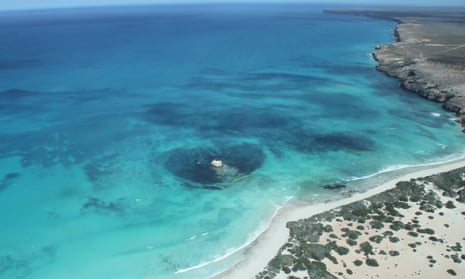BP is proposing to drill for oil in the Great Australian Bight using plans that fall a long way short of industry best practice and would not be allowed in some other regions, according to an expert in oil spill disasters.
Andrew Hopkins, emeritus professor at the Australian National University, has researched BP’s Deepwater Horizon disaster in the Gulf of Mexico in 2010. Writing in the Conversation he said it was “by no means obvious” that BP had reduced risks of a spill in the Bight to as low as reasonably practicable, which is the requirement under Australian law.
BP has proposed to drill for oil inside a commonwealth marine reserve in the Great Australian Bight. Its first two environmental plans were rejected, after the regulator found they did not meet its requirements. Its third plan is expected to be resolved next week.
Hopkins compared the limited information BP had made available about its plans to drill in the Bight with what would be required to drill in other regions, and with practices committed to in other regions.
In Hopkins view BP’s plans probably would not be acceptable if it was planning to drill for oil in the Arctic.
If BP’s well in the Bight blew out, as the one in the Gulf of Mexico did, the company would first try to cap it. But, if that failed, it would drill a “relief well”, which would intersect with the one spilling oil. It would then be filled with concrete to block the spill.
BP’s oil spill modelling says its “realistic and achievable time to drill a relief well is 149 days”. Earlier estimates from the company suggested it would take 157 days.
But new US regulations for drilling in the Arctic require a relief well to be drilled and completed within 45 days. To achieve that, the company must have access to a nearby rig.
BP has not said it will have its own rig nearby in the Bight. Instead, it would borrow one from another company. But it is unclear where such a rig would come from, since there are no other rigs in the Bight.
Hopkins told the Guardian it also wasn’t clear how quickly another company could release a rig for this purpose.
“The Gulf of Mexico blowout was stopped in 87 days, during which time it inflicted damage worth at least $40bn. Who knows what the toll would have been if it had lasted almost twice as long?”
Before drilling a relief well, BP would try to cap the blowout using a a “capping stack”, a new piece of equipment designed after the Gulf of Mexico disaster.
BP has previously said it would rely on shipping a stack from Singapore to the Bight, which would take 32 days. Including shipping time, it said capping would take 35 days – an estimate government officials have said was “optimistic”.
Five capping stacks are available for rigs in the Gulf of Mexico and are expected to be on site within 48 hours. In the Arctic, a capping stack must be at the site within 24 hours.
“If the Arctic justifies this level of protection, why not the Bight?” Hopkins said.
A recent exercise in the Gulf of Mexico showed that a nearby capping stack could be used to cap a spill in just 15 days, he said.
“In this respect BP’s estimate of the time it would take to cap a blowout is a long way short of industry best practice.”
Hopkins said that even BP’s plans to use subsea oil dispersants would not necessarily be deployed before oil reached a shoreline. BP has said subsea dispersal would begin within 10 days “where that is possible” but oil could reach the coast within 9.2 days.
“Its published oil spill response plan gives no guarantee that an oil spill in the Bight would not reach the shoreline and damage the environment,” Hopkins said.
A spokeswoman for BP said: “In the very unlikely event that there was a well incident, we would take action immediately, starting from within seconds. There are lots of parallel activities that we would mobilise, such as starting dispersant injection or surface recovery, at the same time as capping the well.
“We believe that the National Offshore Petroleum Safety and Environmental Management Authority (Nopsema) is a technically credible, strong and independent regulator overseeing a world-class regulatory system. The ‘objectives-based system’ used by Nopsema requires companies including BP to identify and appropriately manage risk; this system ensures each activity is assessed based on its circumstances, instead of the one-size-fits-all approach taken in some other countries.”

Comments (…)
Sign in or create your Guardian account to join the discussion